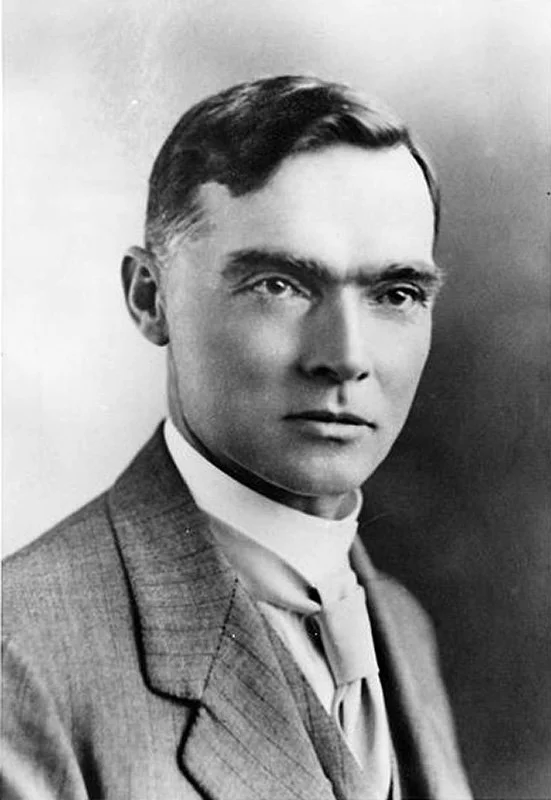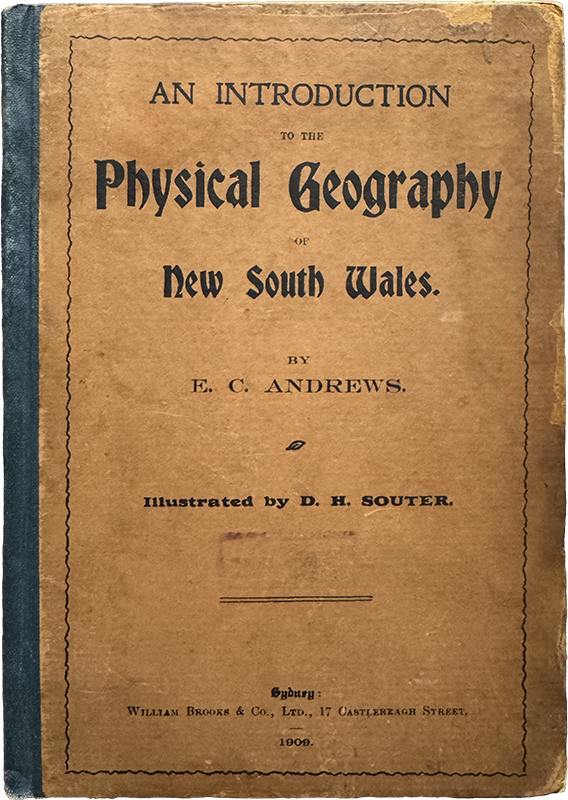E. C. Andrews
Ernest Clayton Andrews. Photograph: National Library of Australia.
Ernest Clayton “E. C.” Andrews was born on 18 October 1870 at Balmain, Sydney, and was unofficially adopted as a child by John and Mary Ann Andrews of Rockdale. Largely self-educated, he became a teacher at Hurstville at age 16, later attending Sydney Teachers’ College and the University of Sydney, where he graduated in 1894 with honours in mathematics. Influenced by geology professor Sir Edgeworth David, Andrews joined the Geological Survey Branch of the New South Wales Department of Mines in 1899. Over the next two decades he undertook major surveys in New South Wales, Queensland, New Zealand, and the Pacific, publishing widely on coal, artesian water, glacial erosion, and coral reefs. His 1905 school text An Introduction to the Physical Geography of New South Wales was used for decades.
Andrews’ 1905 school text. (1909 print.)
Appointed government geologist in 1920, Andrews oversaw coalfield mapping, mine valuations, and mineral resource studies. His reports and maps included references to Lightning Ridge, documenting the geology of the opal fields during the early years of mining. He was a member of a number of scientific organisations, serving as president of the Royal Society of New South Wales, the Australasian Institute of Mining and Metallurgy, and the Linnean Society, and led Australian delegations to the Pacific Science Congress.
Retiring in 1930, Andrews continued research and writing, producing works on Pacific botany and geology. Honours included the David Syme Research Prize (1915), Clarke Medal (1928) and the Lyell Medal (1931). The Eucalyptus andrewsii was named for him.
Andrews died at Bondi on 1 July 1948 and was cremated.
Signature of E. C. Andrews sourced from a document on prospecting in New South Wales, 1931, NSW MEG DIGS.
Article: Research by Russell Gawthorpe and Leisa Carney, edited by Russell Gawthorpe. LRHS research compiled by Len Cram and Barbara Moritz. Sources: ‘A Successful Young Geologist’, Daily Telegraph, 31 May 1898, An Introduction to the Physical Geography of New South Wales, E. C. Andrews, 1905; p. 7; ‘Annual Report of the Department of Mines, New South Wales, 1928, p. 99; The Mineral Industry of New South Wales, 1928, pp. 302-308; ‘At 76 He Took a Science Prize’, Daily Telegraph, 8 December 1946, p. 31; Old Resident’s Death’, ‘Scientist’s Death’, The Propeller, 8 July 1948, p. 3; The Propeller, 6 November 1952, p. 1; Australian Dictionary of Biography, vol. 7, 1979.



